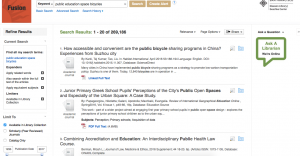Hello everyone for those who don’t remember, my name is Matthew Mata, I grew up in Chicago – the greatest Urban city in the country. There are three main components that make a city strive – all of which Chicago has – culture, connectedness, and an extraordinary populus. Chicago is ranked second of metropolitan cities in relative size for their transportation system. Besides it’s vast array of destinations – at any given time of day you can see ‘Chicago’ on any train car. Going to school in the city it was common to take public transportation due to its ease both financially and overall convenience.
Currently, Chicago bike ridership is at its highest level – approximately 1.7% of Chicago’s going to work age 16 and up ride their bike to work. With Chicago’s population of 2.7 million and 400,000 commuting to work within city limits, that is only 6,800 bikers community to work daily. The Chicago Department of Transportation admits these statistics have their own limitations, for staffers and volunteers count bicyclists manually at 20 downtown locations on one day each quarter, during the morning and evening rush hours. According to the CDOT counts, the total number of cyclists at these 20 locations increased in the morning rush hour on average 16.9 % from 2012-14 while afternoon bicycle counts increased 20.7% from the same years. Despite these increases, I still do not see bicycling being an ideal mode of transportation in the city of Chicago. Like any bicycle city, bike theft is very common. According to the Chicago Police Department, there were 4,919 bikes reported stolen in Chicago in 2012 and 4,608 in 2013. Each year approximately 94% of bike theft investigations get suspended – meaning the CPD has exhausted their resources and will terminate the investigation unless new evidence is brought forth. Let me reiterate that these statistics only highlight the number of reported stolen bikes.
The most logical mode of transportation in Chicago is taking the ‘L’ or train system. While yes the cost associated with taking the ‘L’ is significantly more, as a biker you risk being one in three people who get their bike stolen – then shelling out $400 yearly on a new bike. Despite the decrease of fatal bicyclist crashes in Chicago of 28% between 2005-2010, there were still 32 cyclist death in Chicago. The injury crash however increased 27% between the same years – 1,236 to 1,566 crashes. On average there are 1,500 bike related incidents reported. This compared to the mere 5,800 crimes reported on the CTA – an average of 16 crimes per day but are insignificant due to there being over 767,730 rail riders daily and 241 million annually
You rarely hear the possible health dangers associated with biking, and are often showed the health benefits – which in Chicago has their limitations. One of Chicago’s most prominent seasons is winter where temperatures so often fall below 0 degrees fahrenheit. With the Average Winter temperature being 21 degrees, based on this graph you can see where the wind chill values fall. *Graphs* This drawback even highlights the inconvenience Divvy – Chicago’s bike sharing program poses. Despite being a more affordable alternative to taking mass transit, Divvy only offers one-speed bikes and 30 minute time limits in between station. And one can only imagine trying to pedal through slush and blistering winds. So the question then becomes what about Divvy is convenient. While yes Divvy’s latest data visualization compared the speed of Divvy with the speed of the CTA. Divvy only wins by insignificant margins. From two areas of study, Divvy bicyclist beat CTA riders anywhere from 2-5 minutes. But you can easily be lucy and get an express train. In closing, the CTA is proven to not only be more convenient, but also the more safe mode of work transportation in Chicago. So now it’s up to you in which L you want to take. Thank you.

